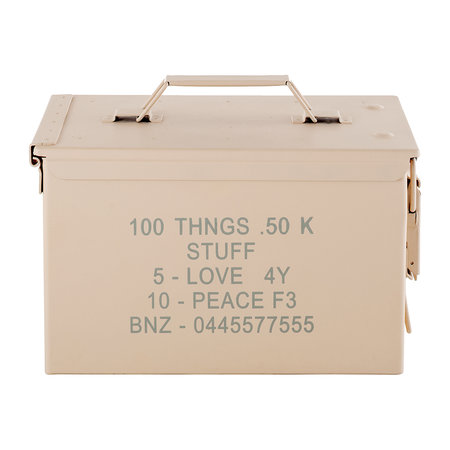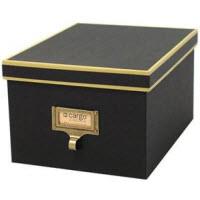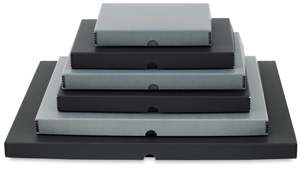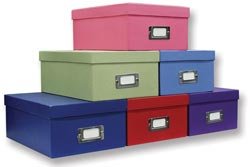organizing tips for memorabilia
Organizing memorabilia is definitely much more of an emotional experience than organizing a kitchen or office, as it can bring up many memories, good and bad. So have an open mind when you decide to tackle this project. Try to remind yourself that you're not casting memories & heirlooms to the side—you're creating more breathing room in your current life, freeing yourself of extra weight & realizing that what's most important is what's happening right now.
Remember you're not made of your "stuff". Memories are of course attached to these sentimental items, but these memories are actually within you, not within your things.
GENERAL OVERVIEW FIRST. You can’t establish any criteria for what you want to keep until you lay everything out in front of you. So first, gather everything in one place.
SORTING. The way you sort memorabilia depends somewhat on the types of items you’re sorting and/or the way you want to organize your collection. When deciding what to keep, choose the memorabilia that is most meaningful to you and that you expect will be meaningful for years to come.
While you’re organizing, you may find keepsakes that will mean more to someone else than they do to you. When you come across those things think about passing them on to loved ones who will cherish them. And of course, anything that no longer has sentimental value should be given away.
Try to keep just one thing per memory or person. If you have a lot of keepsakes chances are they're plenty of items that double up on memories & people. If you have two things that remind you of a concert you went to think about keeping your favorite one.
Next, group similar items together using baskets or boxes you’ve labeled with the types of mementos you have. Some common categories include: photos, kids’ artwork, cards, certificates & other documents, crafts and projects. For example, you might sort photos, letters or trinkets by event—or by the period/time in your life—or by person. If you’re creating a timeline of memories, sorting by event makes sense. If you’re creating a memory box of a certain person, it makes sense to collect pictures and artifacts together for that person.
PURGING & LETTING GO. The goal of pruning down your collection is to create a collection of memorabilia that effectively preserves a memory of a person, event or story. The focus is on quality over quantity.
PRESERVING/STORING. Having gone through this process you’ve identified items that you truly value. Take care of these items by storing them in containers that will preserve them over time. Consider where in your home you will store memorabilia and make sure your containers adequately protect things in the this environment. If limited space is a factor in your decision to organize memorabilia now is a great time to assess your storage. Could you make better use of your space with stackable storage tubs or photo boxes? Figure out the best use for your space. And don’t keep more than you can reasonably store. A space limitation can actually be helpful when prioritizing what you truly want to keep.
Organizing tips for photos
DECIDE WHAT YOUR GOAL IS. What is your end goal? Do you want to preserve your photos for future generations? Are you tired of having boxes & photo albums all over the place? Have you ever thought of going through the albums & NOT holding onto every photo in the album? This doesn’t include wedding, confirmation, bar/bas mitzvah albums, obviously.
GATHER GATHER. AND GATHER SOME MORE. Put everything in one place in your home or apartment for this process. Get your photo albums, photo storage boxes, plastic bins; go through drawers, file folders, closets, shopping bags & put them in this ONE PLACE—TEMPORARILY. Temporarily could mean for a few hours while you evaluate what you have & then you can put everything back if your space is limited or if you're not ready to tackle this project immediately. Or temporarily could be the area that you will be using for the sorting process. This of course depends on how much free space you have in your home to devote to this project. Many people want to keep their old family photo albums intact so put those in one place. You can’t decide what your photo organizing process is going to be until you know exactly what you’re working with.
SORT/STAGE/LABEL. There are several ways to 'sort' & there is no need to think you have to start at the "beginning". Once you decide HOW you want to sort everything just dig in & start somewhere. You can sort chronologically, by theme, by occasion, by vacation, by person/family member, by location, etc. Deciding HOW you want to sort your collection is KEY. You can't really begin the process until you decide this part of the equation.
Then, you need to designate a "staging" area to begin this process. "Staging" the photos is generally not where they will eventually live, unless you already have the proper storage boxes for photos & documents, etc. For staging you can use shopping bags, shoe boxes, small plastic bins, large ziploc bags—just for this sorting/staging process. As you start to stage the photos into these holding bins, start to label these temporary "homes" during the sorting/staging process. Once you finish the staging you should have a pretty good idea of the quantity & sizes of the storage boxes you will need. Buy boxes that are made for photos. The word to look for is "archival".
GET THE PRODUCTS YOU NEED WHILE SORTING.
Photo-safe pencils for writing on the backs of photos
Product to remove old-adhesive residue from the backs of photos
Post-it notes for sorting
Cotton gloves for handing photos
STORING PHOTOS. Consider: Humidity. Garages, basements, attics or storage units (unless they are humidity-controlled) are not optimal places to store photos & important memorabilia. Temperature. Avoid hot & cold extremes. Light. The darker the location, the better. UV and fluorescent light fades images.
Once your photographs are organized and stored you can ensure their safety for generations to come.
GO DIGITAL. Digitizing photos & important documents can help ensure they last forever and can be shared with future generations. With the ability to scan (digitize) old photos/documents you can electronically store your entire collection and it can be preserved. If your computer or devices crashed or there was a natural disaster tomorrow—what would happen to your photos & important documents if they aren't backed up? They and the memories they represent could be lost forever.
If you decide to go digital, there are professional companies you can hire to help you manage/organize/digitize your photos, videos, etc. These companies can digitally archive and organize aging photos, home movies, digital photos and videos so you can have easy access to your memories. They can scan slides, negatives, photos, videos or movies to DVDs or the cloud & do it all for you.










